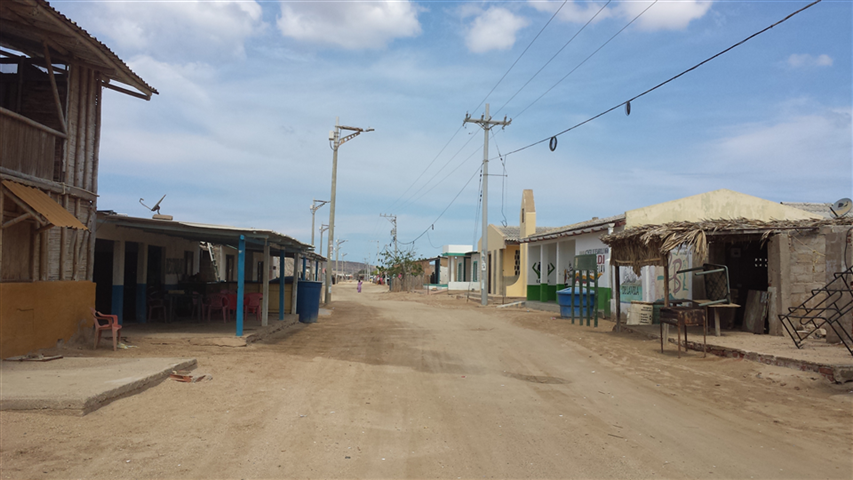It is time to tell you about our trip to the
most Northern point of South America: Cabo de la Vela.Cabo de la Vela is located in
La Guajira region which is one of the 32 departments of Colombia, whose capital is Riohacha. It is a region full of breath-taking landscapes as well as giving you the opportunity to stay in contact with the
local indigenous population called Wayuu. This indigenous tribe represents nearly 45% of La Guajira population and has a peculiarity: when the children born, they take their mother's surname because, unlike any expectation, the woman is not only the head of the family but also the leader of the culture Wayuu. They also devote special attention to textile art; travelling in Colombia, indeed, you will find everywhere the colourful handbags typical of local handicrafts to which you cannot resist!
It is not easy to reach this place but locals are always happy to help you if you ask for their advice, especially if you can speak Spanish.
We leave from
Palomino (a seaside village where we stopped for few days and where mosquitos literally ate us!) by local bus for about 2 euros in the direction of
Riohacha. From here we share a taxi with other people (about 7 euros per person) to reach the village of
Uribia, where we spend the night in a sort of hostel in the middle of nowhere.
It is quite easy to find these shared cars/taxi because the drivers are constantly screaming “taxi” on the road especially when they see tourists around.
The next morning, after about 4 hours of waiting in the middle of the local market with lots of hanging meats surrounded by insects, we take a shared Jeep (for about 6 euros each) to finally reach Cabo in about 1 hour by dirt road.
During the trip by car, you can see different shades of the red sand that characterize this area, which is a semi-desert zone almost without vegetation. Cabo de la Vela is a village with small houses built mainly with cactus plant and located about 20m from the sea.
As you can imagine, the village does not offer a wide choice of accommodation. Usually you can sleep in a hammock or in basic rooms with a bed, window and a toilet; to use the “restroom” you need a bucket of water to flush and a trash bin to throw the toilet paper (it is not easy to get used to this but then after a while it becomes normal). We choose to stay at "
Daniel homestay" sharing a bed (oh yes, this time Sonia and Marica choose to treat themselves as “rich persons” after sleeping on hammocks for a week, not really comfortable for the back) for about 5 euros per person including breakfast (even gluten-free with eggs and arepas to the delight of Marica).
The shower consists of a bucket of water per room distributed before sunset and be careful not to ask for another one!
There is no electricity, running or drinking water. After sunset, we use a candle and we appreciate the natural light of an incredibly starry sky. The rhythms of the day are therefore marked by the sun and at dawn, you wake up with the cock singing (together with the smell of chicken soup at 5 am!).

Cabo de la Vela seems to be a
village out of the world but it offers many contrasts between the colour of the desert and the one of the blue seas as in the case of the Pilon de Azucar. This is a beach accessible by moto taxi (the two of us and the driver just with one motorbike- here everything is possible!) for around 3 euros round-trip. Other beautiful places are
Ojo de Agua beach and the
Lighthouse from where you can admire a spectacular sunset.
The village does not have supermarkets, so you can just eat local food obviously made by locals. We are lucky enough to meet a very kind elderly lady who makes the lunch for us every day for about 3 euros (the meal usually includes fish or meat, salad and white rice). Fortunately, there is a small pharmacy and a medical centre mainly used for pregnant indigenous women or for an emergency in case of unlucky tourists (for example Marica for her stomach infection!).
In conclusion, Cabo de la Vela is an
extraordinary place, especially for kite surfers and windsurfers. Suitable for those who can live without electricity, water, Wi-Fi and any comfort for few days. Here you learn to live with nature and respect it as a guest and not as its owner, in line with the principles of responsible tourism.
Destination strongly recommended!